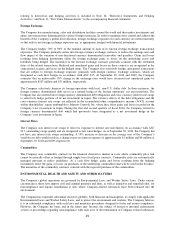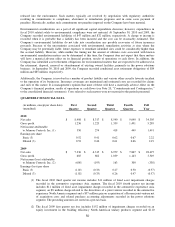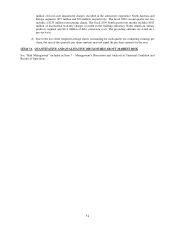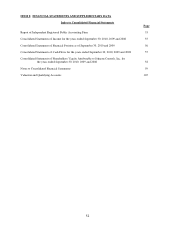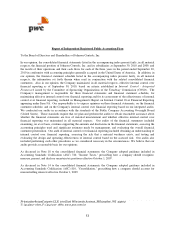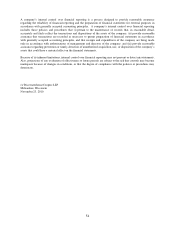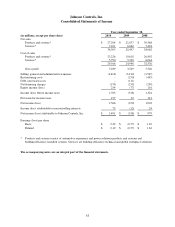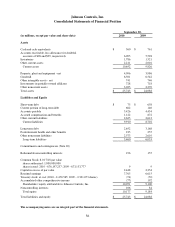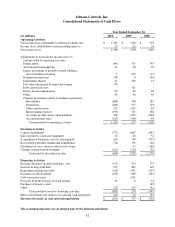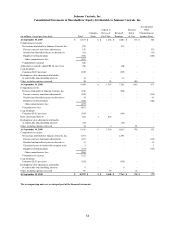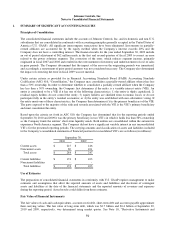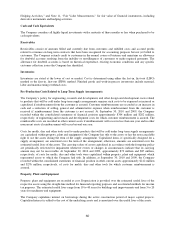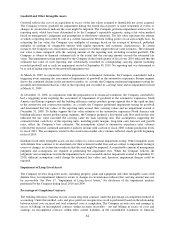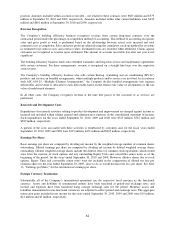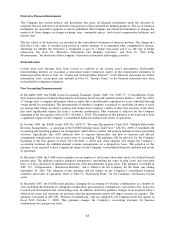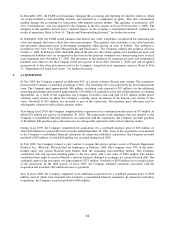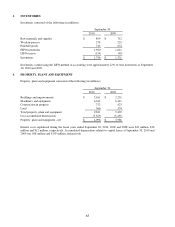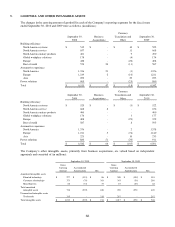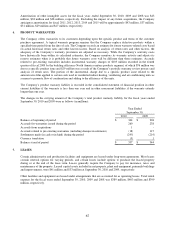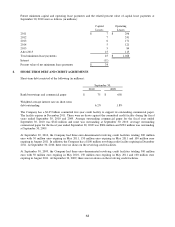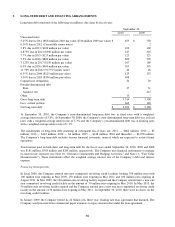Johnson Controls 2010 Annual Report Download - page 59
Download and view the complete annual report
Please find page 59 of the 2010 Johnson Controls annual report below. You can navigate through the pages in the report by either clicking on the pages listed below, or by using the keyword search tool below to find specific information within the annual report.
59
Johnson Controls, Inc.
Notes to Consolidated Financial Statements
1. SUMMARY OF SIGNIFICANT ACCOUNTING POLICIES
Principles of Consolidation
The consolidated financial statements include the accounts of Johnson Controls, Inc. and its domestic and non-U.S.
subsidiaries that are consolidated in conformity with accounting principles generally accepted in the United States of
America (U.S. GAAP). All significant intercompany transactions have been eliminated. Investments in partially-
owned affiliates are accounted for by the equity method when the Company’s interest exceeds 20% and the
Company does not have a controlling interest. The financial results for the year ended September 30, 2009 include
an out of period adjustment of $62 million made in the first and second quarters of fiscal 2009 to correct an error
related to the power solutions segment. The correction of the error, which reduces segment income, primarily
originated in fiscal 2007 and 2008 and resulted in the overstatement of inventory and understatement of cost of sales
in prior periods. The Company determined that the impact of the error on the originating periods was immaterial,
and accordingly a restatement of prior period amounts was not considered necessary. The Company also determined
the impact of correcting the error in fiscal 2009 was not material.
Under certain criteria as provided for in Financial Accounting Standards Board (FASB) Accounting Standards
Codification (ASC) 810, ―Consolidation,‖ the Company may consolidate a partially-owned affiliate when it has less
than a 50% ownership. In order to determine whether to consolidate a partially-owned affiliate when the Company
has less than a 50% ownership, the Company first determines if the entity is a variable interest entity (VIE). An
entity is considered to be a VIE if it has one of the following characteristics: 1) the entity is thinly capitalized; 2)
residual equity holders do not control the entity; 3) equity holders are shielded from economic losses or do not
participate fully in the entity’s residual economics; or 4) the entity was established with non-substantive voting. If
the entity meets one of these characteristics, the Company then determines if it is the primary beneficiary of the VIE.
The party exposed to the majority of the risks and rewards associated with the VIE is the VIE’s primary beneficiary
and must consolidate the entity.
Based upon the criteria set forth in ASC 810, the Company has determined that for the reporting periods ended
September 30, 2010 and 2009 it was the primary beneficiary in two VIE’s in which it holds less than 50% ownership
as the Company funds the entities’ short-term liquidity needs. Both entities are consolidated within the automotive
experience North America segment. The Company did not have a significant variable interest in any unconsolidated
VIE’s for the presented reporting periods. The carrying amounts and classification of assets and liabilities included
in the Company’s consolidated statements of financial position for consolidated VIE’s are as follows (in millions):
September 30,
2010
2009
Current assets
$
215
$
146
Noncurrent assets
69
101
Total assets
$
284
$
247
Current liabilities
$
174
$
103
Noncurrent liabilities
-
-
Total liabilities
$
174
$
103
Use of Estimates
The preparation of consolidated financial statements in conformity with U.S. GAAP requires management to make
estimates and assumptions that affect the reported amounts of assets and liabilities and disclosure of contingent
assets and liabilities at the date of the financial statements and the reported amounts of revenues and expenses
during the reporting period. Actual results could differ from those estimates.
Fair Value of Financial Instruments
The fair values of cash and cash equivalents, accounts receivable, short-term debt and accounts payable approximate
their carrying values. The fair value of long-term debt, which was $3.7 billion and $3.4 billion at September 30,
2010 and 2009, respectively, was determined using market quotes. See Note 10, ―Derivative Instruments and


